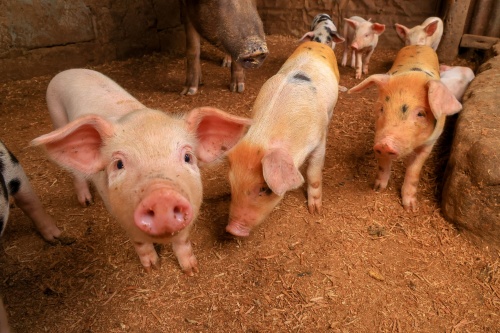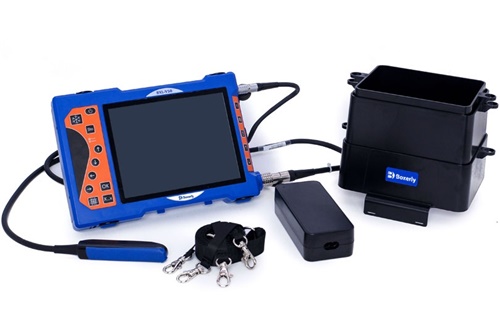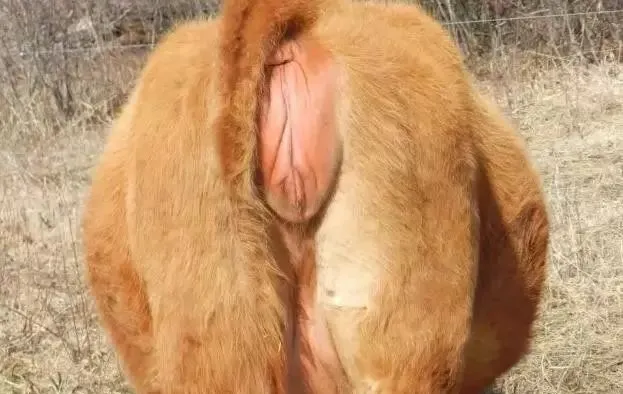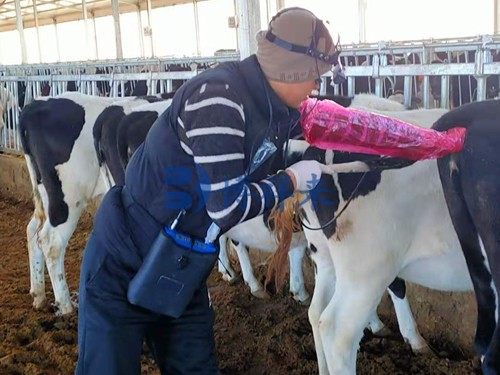Imagine walking into a barn where dozens of animals look healthy on the outside—but hidden beneath the surface, one cow has a uterine infection, a pig shows signs of respiratory inflammation, and a horse is developing early-stage colic. Now imagine identifying those issues before they become visible or fatal—all with a simple, silent probe. That’s the power of ultrasonic disease detection.

Ultrasound isn’t new in medicine, but its applications in animal health—especially on farms and in mobile vet clinics—have expanded drastically. While reproductive imaging still dominates in many livestock operations, we’re now seeing a broader use of ultrasonography to detect early-stage diseases in everything from dairy cows and beef cattle to pigs, goats, and horses.
Let’s walk through how this non-invasive tool is changing the way veterinarians diagnose and monitor animal health, and why producers in the U.S., Europe, Australia, and beyond are making ultrasound part of their disease management toolkit.
The Basics: How Ultrasound Detects Disease
At its core, ultrasound uses high-frequency sound waves to create real-time images of organs, tissues, and fluid structures. When something’s off—like a lung filled with fluid, a thickened intestinal wall, or abnormal lymph nodes—the image reflects it clearly.
In animals, it’s especially helpful because they can’t explain what’s wrong. By scanning organs like the liver, heart, uterus, lungs, or intestines, vets can spot:
Fluid build-up (in lungs or abdomen)
Inflammation or abscesses
Cysts or tumors
Organ enlargement or shrinkage
Changes in tissue thickness or density
One example: A sow may appear fine but isn’t eating much. A quick ultrasound of her gastrointestinal tract might show increased intestinal wall thickness—a sign of subclinical enteritis. With early treatment, she recovers before performance drops.
Common Disease Applications in Different Species
Cattle
In both beef and dairy operations, diseases often hide under the surface. Ultrasonography helps detect:
Endometritis post-calving, a leading cause of reduced fertility
Lung consolidation in calves with pneumonia
Liver abscesses, especially in feedlot animals
Left displaced abomasum (LDA)—a common digestive problem
What’s especially useful here is that portable ultrasound can be used right in the pen, with no sedation required. In many U.S. and EU dairies, early uterine disease detection has improved reproductive performance and reduced antibiotic use.
Swine
Pigs are tricky. They often mask symptoms until things get severe. Ultrasound has become key in identifying:
Respiratory disease—increased lung echogenicity or fluid
Reproductive issues—such as cystic ovaries or uterine fluid
Musculoskeletal injuries, especially in breeding boars
In commercial settings, group-level scanning is even used to monitor chronic health status across populations—without disrupting herd flow.

Equine
Horse owners worldwide appreciate how gentle ultrasound is. It’s now widely used for:
Colic diagnosis—distinguishing gas, impactions, or twisted intestines
Tendon injuries—seeing fiber disruption early on
Pleural effusion—fluid around the lungs that’s missed on basic auscultation
Especially in racehorses or sport horses, detecting soft-tissue injuries early can make the difference between rest and retirement.
Sheep and Goats
In small ruminants, scanning is often reproductive-focused, but more producers are using it to:
Identify lung lesions in lambs
Monitor GI tract inflammation in cases of parasite overload
Confirm ruminal bloat or foreign body ingestion
Even in remote Australian or New Zealand grazing areas, handheld scanners allow producers to catch subclinical illness before major losses occur.

Why Ultrasonic Detection Is Gaining Ground
Let’s look at the practical reasons farmers and vets in Western countries are adopting this tech fast.
1. Early Diagnosis Saves Money
The earlier a disease is detected, the cheaper it is to treat. One study from the University of Guelph showed that treating subclinical mastitis early with ultrasound reduced culling rates by 25% over two years.
2. No Need for Blood or Stress
Drawing blood or waiting for lab results delays treatment. Ultrasound offers instant feedback with no needles and minimal stress. For herd animals, that’s critical.
3. Non-Invasive and Repeatable
You can scan the same animal every few days to monitor treatment response. No harm, no stress, no withdrawal period.
4. Versatile Across Species
Whether it’s a calf or a camel, one portable machine—like a B-mode Veterinary ultrasound—can be used across multiple animals with only a probe switch.
Case Study: Respiratory Disease in Calves
Respiratory infections are a top cause of mortality in young calves. In Canada and northern U.S. regions, cold stress and crowding make this worse.
Farmers using ultrasound have noticed:
Better identification of which animals need antibiotics
Ability to monitor lesion healing over time
Fewer unnecessary treatments
Veterinarians now bring pocket-sized devices to farms for quick, targeted lung exams—often using convex or linear probes depending on calf size.
What's Needed to Make It Work?
Veterinary ultrasound is highly effective, but it does take skill. That’s why we see many foreign producers investing in training or hiring mobile sonographers. Key needs:
Proper training in image interpretation
Clean probe contact (usually with alcohol or gel)
Regular equipment maintenance
Accurate recordkeeping to track health over time
Handheld or portable ultrasound units like BXL-V50(The following figure) make it easier than ever. With high image resolution and multi-probe compatibility, it suits busy field conditions—especially in large herds or swine barns.

The Human Side: Conversations from the Field
Speak to vets in rural Illinois, cattle producers in Queensland, or pig farmers in Denmark, and you’ll hear the same thing:
“I don’t know how we managed health checks before we had ultrasound. We were reacting to problems, not preventing them.”
This shift—from reactive to proactive—defines modern veterinary care. And it’s driven in part by better, faster, and more accessible ultrasound technology.
What’s Next?
The future of ultrasonic disease detection is exciting. With AI image enhancement, real-time data logging, and integration into herd health software, producers can soon expect:
Predictive health monitoring based on repeated scans
Automated alerts when tissue changes are detected
Remote consultations, where images are uploaded to cloud systems for expert review
Some U.S. startups are already piloting AI-assisted pig lung screening systems that flag abnormalities without a vet present—perfect for large operations.
Final Thoughts
Ultrasound has gone from being a reproductive tool to becoming a cornerstone of proactive disease management. It’s quick, safe, repeatable, and cost-effective—making it ideal for farms, clinics, and even wildlife centers.
For producers, it means healthier animals, lower costs, and better welfare. For vets, it offers faster answers and more accurate care. For the animals, it means earlier relief and less suffering.
Whether it’s detecting pneumonia in calves or colic in horses, ultrasonic disease detection isn’t the future. It’s already here—and it’s changing how we care for animals, one quiet scan at a time.








